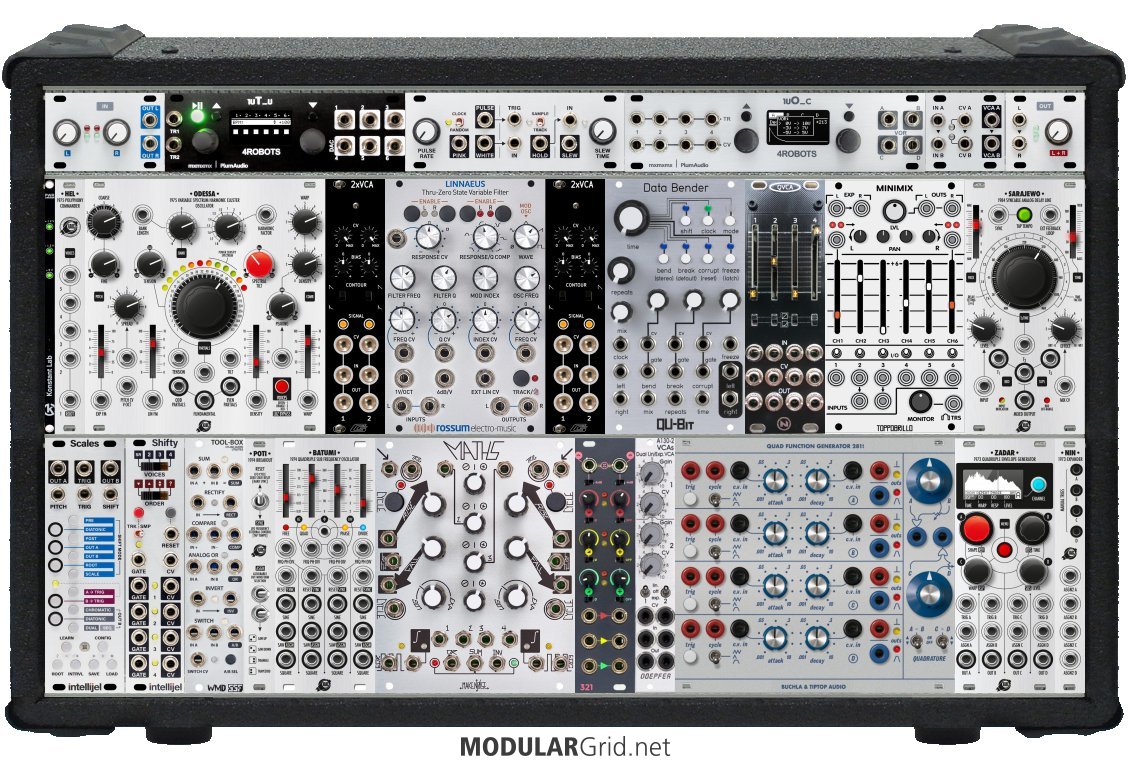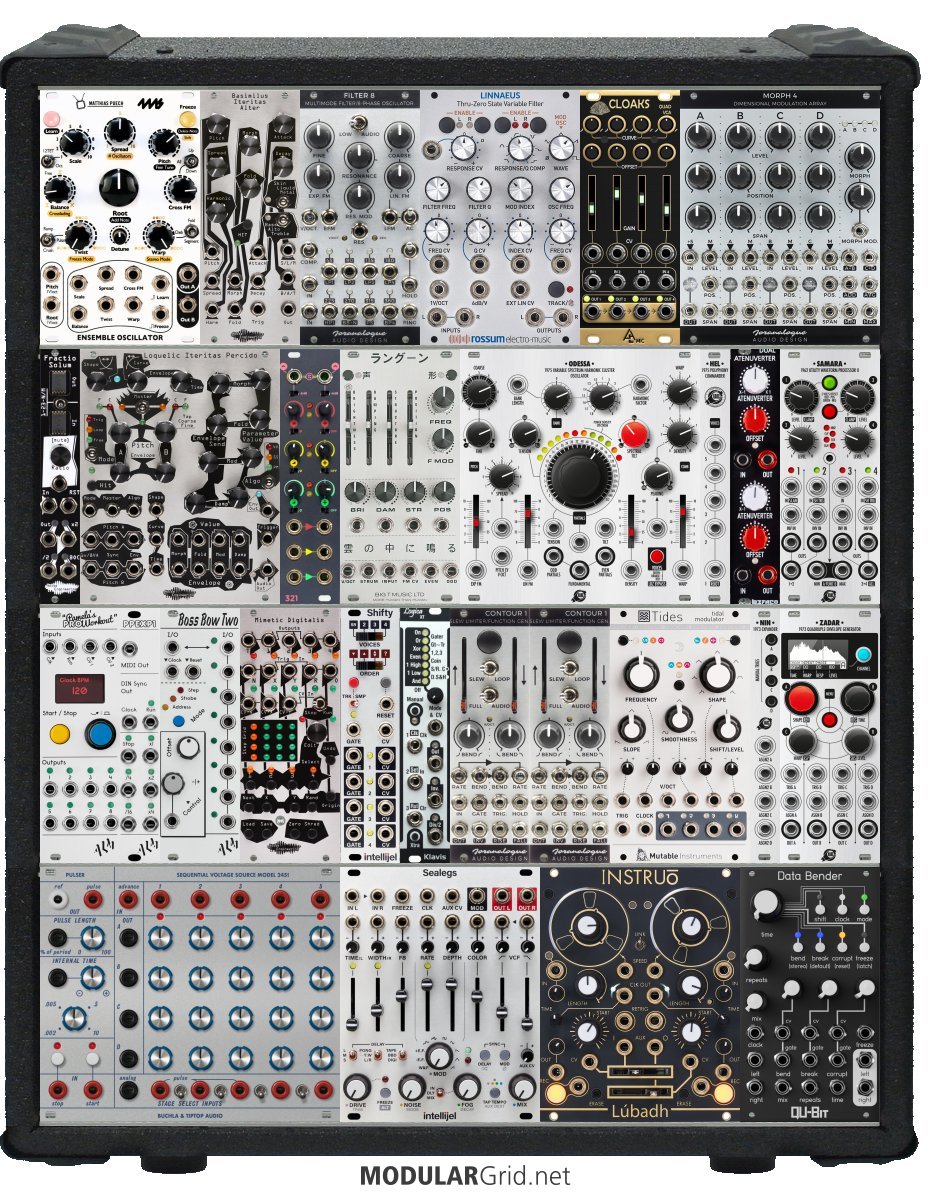OK...well, here's what I came up with:

I went in a rather different direction here. There's a lot of "West Coast" stuff in here, most notably the presence of the Buchla 281t, Maths, and the Minimix. Of those, only the Maths isn't a Buchla design...but it IS based on Serge's DUSG. On 'roids.
TILES: Changed this a lot: stereo input (connects to two of the Intellijel cab's 1/4" jacks), a Temps Utile (which is why the Pam's is gone), Intellijel's Noise Tools utility, the O_&c, a stereo VCA to control output levels, and the stereo out (connects to the other two 1/4" jacks). 100% function now.
MIDDLE: All voice. The little black thing on the left is one of Konstant Labs' PWRchekrs, lets you monitor the health of your DC rails. Then a Xaoc Odessa (massive complex oscillator) with the Hel expander (lets you feed five CVs into the Odessa for...yep...basic polyphony, at least at this stage). A pair of G-Storm VCAs after that controls levels from the Odessa or the external input (or both), then...since by now, we're really dealing with a stereo out on the Odessa (ie: odd and even harmonics...although, it can also run in mono via the "Mix" jack), I dropped in one of Dave Rossum's very pliable VCFs. The Linneaus has some very interesting capabilities, such as having through-zero modulation and loads of timbral control. Two more VCAs deal with the Linneaus' output, then the feed goes to the Data Bender. The Data Bender then feeds a pair of VCAs in the Neutron Sound quad VCA before going to the Minimix. That mixer has three (one fixed level) stereo inputs, four mono ins, two of which have CVable panning. The Sarajewo delay is there at the end so that you can drop it in across several different mixing points.
BOTTOM: Scales, Shifty, then a very useful 6 hp from SSF that contains loads of utility submodules, such as voltage summing, a comparator, inverter, 2 to 1 switch, and so on. Batumi/Poti for your four LFOs, then Maths, then the little brown thing is Frap's 321, which makes for an excellent modulation alteration device along with the dual VCAs after it. And then the 281t...which you can use for 2 or 3-stage envelopes, or you can set it up in one of its quadrature modes as another complex function generator like Maths. And that's possible because there's four "proper" EGs after it, along with the quad control expander (useful if you start to explore the Odessa's poly capabilities).
Now THAT is a fine piece of gear. Soundwise, it's going to hover in a nifty "weird zone" somewhere between German-style wavetable synthesis, West Coast, and just plain effin' trippy. Loads of potential, too!



